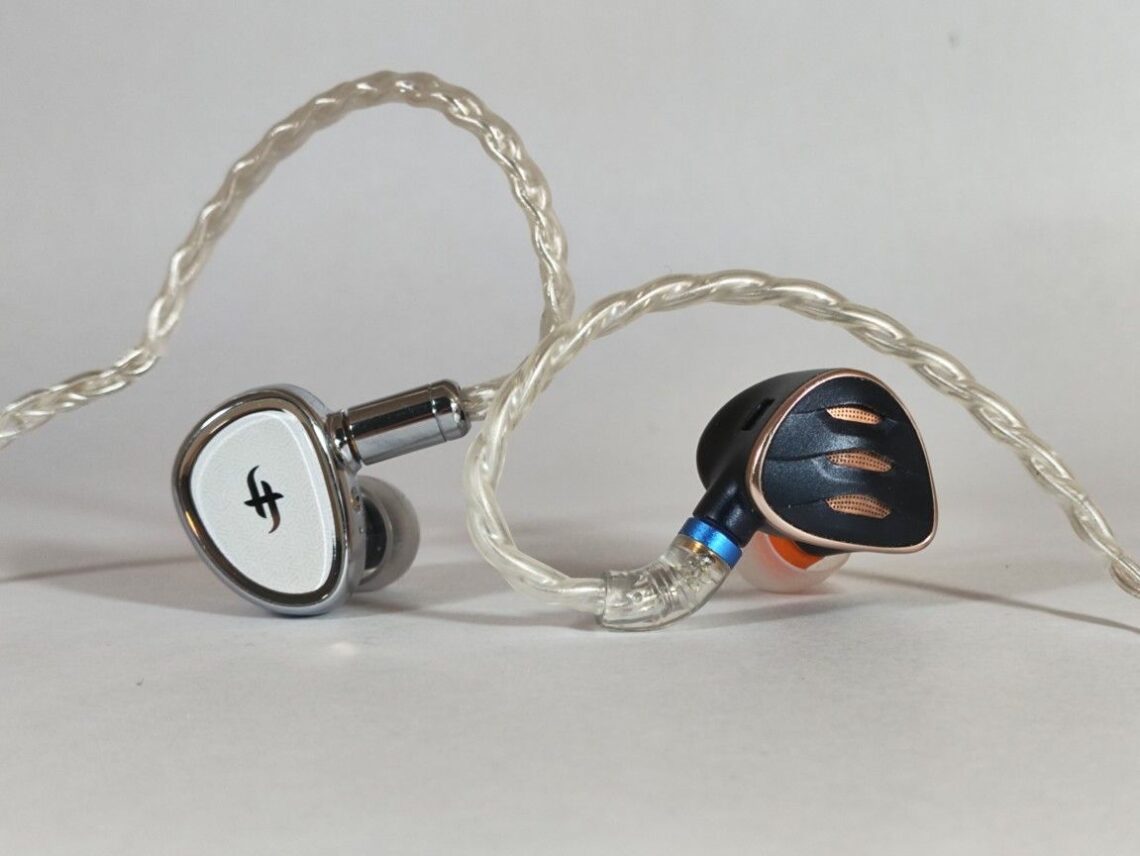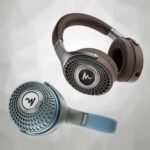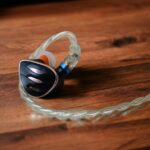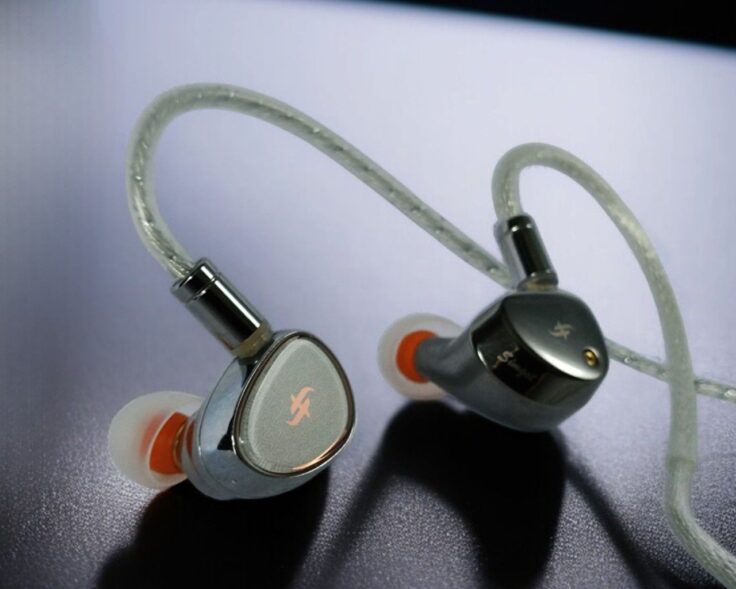The EA2000 is Simgot’s current flagship. It is a 12 mm single dynamic driver in-ear monitor with a semi-closed construction utilizing a passive radiator. A dual magnet setup delivers a magnetic flux density exceeding 1.9 Tesla, which is quite impressive.
The FiiO FH5S is a multiple driver earphone, with four drivers per side. There’s a 12 mm dynamic driver for the bass and a 6 mm for the midrange , both with a beryllium-coated diaphragm. The treble is handled by two Knowles TWFK-30017 balanced armature drivers.
The EA2000 is priced at 319 USD at the time of writing, and the FH5S is somewhere around 250 USD.
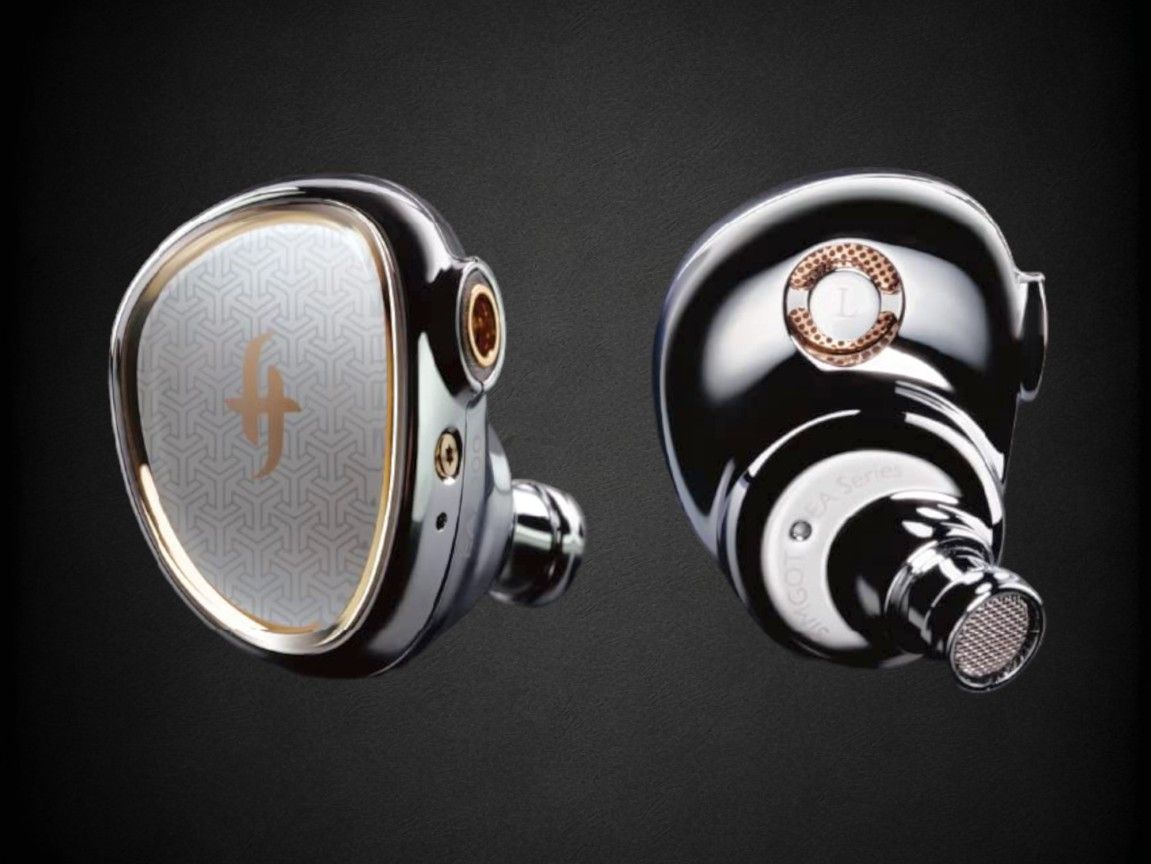
SIMGOT EA2000 SPECIFICATIONS
- 12mm Dynamic Driver (DD)
- 6 mm Passive Radiator (PR)
- Dual Magnetic Circuit & Dual Cavity Structure Dynamic Driver
- 1.9 Tesla Magnetic Flux.
- Impedance: 23 Ω
- Sensitivity: 114 dB
- Effective frequency response range: 20 Hz–20 kHz
- Detachable Cable: 120 cm Silver-Plated OFC Litz Cable 8 core, 152 strands
- Earphone Connectors: MMCX
- Cable termination: 3.5mm and 4.4
- Replaceable tuning module plugs are built into the exchangeable cable connectors. There are two tuning options for 3.5mm jacks, but only one for 4.4mm jacks.
Check the current price here:
- Linsoul: Simgot EA2000
- Amazon: Simgot EA2000
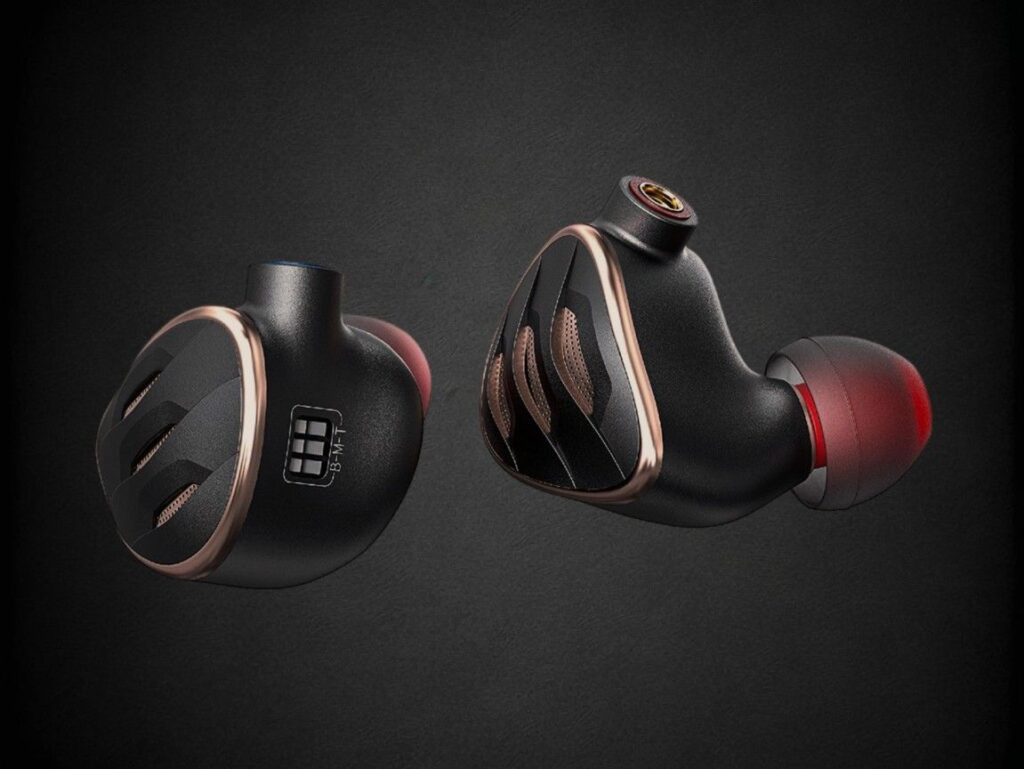
FiiO FH5S SPECIFICATIONS
- Drivers: 12mm beryllium-plated diaphragm/PU gasket + 6mm beryllium-plated + Knowles TWFK-30017 compound BA
- Impedance: 40Ω(@1kHz )
- Sensitivity: 106dB/mW
- Frequency Response: 10Hz – 40kHz
- Weight: Approx. 8.8g (single ear unit)
- Max Power Input: 100mW
- Earphone Connector: MMCX
- Headphone Plug: 2.5/3.5/4.4mm gold-plated plug
- Cable Length: 120cm
- 3 dip switches for increased bass, lowered mids and increased highs, respectively.
Check the current price here:
BUILD AND COMFORT
The most immediate difference is the heavier build and somewhat larger size of the EA2000. The large 12 mm driver assembly is enclosed by a metal housing with a decorative faceplate. It is relatively comfortable to wear, but I would not have it as my first choice when going to the gym. An interesting feature is that the EA2000 comes with a replaceable tuning adapter. It is built into one of the two supplied detachable 3.5mm jacks (with blue details). The “blue” adapter makes the sound a bit warmer and smoother.
The FH5S comes with more and better implemented tuning options in the form of three tuning switches on the IEM. They are said by FiiO to increase the bass, give “clearer” mids, and increase treble, respectively.
The FH5S’ body is made of CNC-machined aluminium-magnesium alloy and very light. It is an acoustically semi-open design with vents on the face plate.
Both IEMs come with detachable cables with interchangeable jacks. On the earphones, both use MMCX connectors.
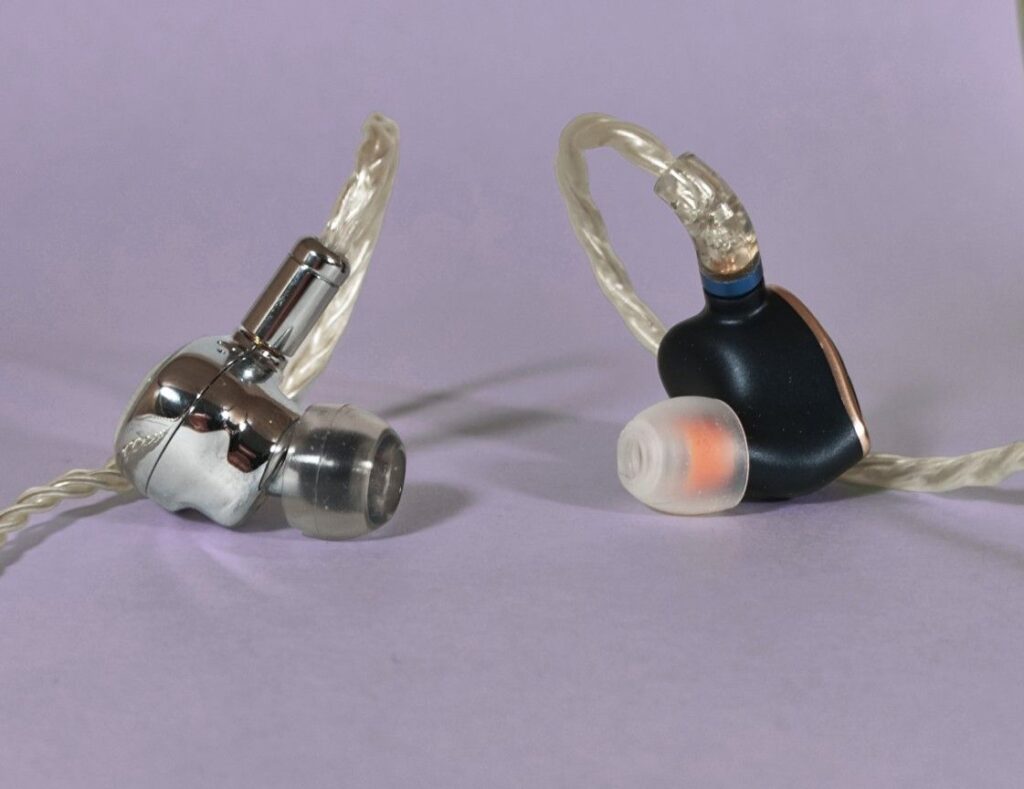
COMPARISONS
TUNING
EA2000: I only used the black (standard) plug. When I compared it to a clean 3rd party cable, I didn’t hear any difference.
FH5S: I did, for the most part, use the FH5S in stock tuning, which is the three switches turned off. However, I will occasionally comment on the sound with the bass switch activated. That is the only tuning option I found myself not infrequently to prefer to the stock tuning.
ASSOCIATED GEAR
I used the Topping A90 amp and the RME ADI-2 DAC FS as a source.
As Before by Olga Konkova
The FH5S has great bass with good punch and nice texture. The cajôn sound excellent; the vocals and piano are very clear. There’s lots of space. However, it sounds a bit dry.
The EA2000 also has great bass and detail, but it sounds more organic and natural. It’s very spacious, but without any hint of dryness. The vocals are delicious.
Activating the bass switch on the FH5S, however, makes the sound warmer and reduces the aforementioned dryness significantly.
Aubade by Trio 3
The EA2000 has an immense sense of detail and fabulous holographic imaging. It also has a very natural-sounding timbre.
The FH5S is also very detailed and has great holographic capabilities. The tuning isn’t very different, but the timbre isn’t as good as the EA2000. There is a crisper and more textured quality to the FH5S’ presentation, and I find the FH5S to be somewhat dry sounding.
The bass switch reduces that dryness and makes the mid-range warmer sounding, though.
Be Good to Me Poly by Youandewan
The bass is fabulous with the EA2000. It’s very controlled and textured, and not overdone. There are lots of details. The treble is bright but not sibilant.
With the FH5S, the bass hits a bit harder, and there’s impressive holographic imaging, even better than the EA2000. However, there’s again this dry warmth. I like the timbre better with the EA1000.
Jambi by Tool
The FH5S has a technically excellent presentation. The bass is tight and full. The midrange is a bit lacking in warmth, and the treble is crisp rather than liquid. The bass switch increases the general warmth, and adds some extra fullnes.
With the EA2000, the first thing I notice is how extremely well defined the bass is. It’s not huge, but it sounds very neutral and detailed; Quantity-wise, it’s not for total bassheads. The vocals are nice and organic-sounding. However, the presentation, as with the FH5S, is a bit bright, and I even get some occasional sibilance that wasn’t there with the FH5S, although it too was very close.
Neither of these IEMs is ideal for this track in their stock form. With the blue tuning filter for the EA2000 and the bass boost switch turned on with the FH5S, they’re both better sounding on tracks like this.
Bored by Deftones
This track sounds better with the EA2000; the bass has more presence, there’s more detail, and the vocals are warmer. The FH5S sounds too bright with the stock tuning; it’s better with the bass boost enabled. The EA2000 sounds better with the blue tuning cable-plug adapter, which takes the edge of the treble and adds some warmth.
It Could Be Sweet by Portishead
The bass is fabulous with the EA2000. There’s a lot of space and fine detail, a great soundstage, and excellent imaging. It is a bit bright-sounding, and I get occasional sibilance with the standard black filter.
The FiiO FH5S sounds very good, too. The bass is a bit fuller-sounding and not as hyper detailed. There’s a good sense of space and imaging. I get occasional sibilance with the FH5S too.
Follow by BMX
This slow jazz improv track is absolutely brilliant with the EA2000. It was actually one of the first songs I put on when listening to the EA2000 for the first time, and I was completely mesmerized. There is so much subtle detail, excellent holographic imaging, and a fantastic timbre. Although it’s a bit of a bright presentation, it’s not too bright. To me, it’s perfect. I have listened to this track a billion times, and I think this is the best experience yet.
The FH5S sounds technically quite close and delivers a very nice performance, but there isn’t quite as much magic.
Lonely Shadows by Dominic Wania
This slow piano piece is mesmerizingly beautiful with the EA2000. It’s airy, clear, and organic-sounding. It feels very “live.” The FH5S sounds less airy; it’s still great, but in a lusher way.
Terminal 7 by Tomasz Stanko Quintet
The EA2000 sounds great, very airy and light on its feet; the percussion is especially snappy and crisp. The FH5S is less snappy. It sounds warmer and lusher, but also a bit flat in direct comparison.
Angel by Massive Attack
They both sound very good. However, the EA2000 is again more dynamic, articulate, and has better separation of instruments. The treble is crisper and clearer compared to the FH5S, which is somewhat lush and smooth. It has an appealing, more laid-back presentation.
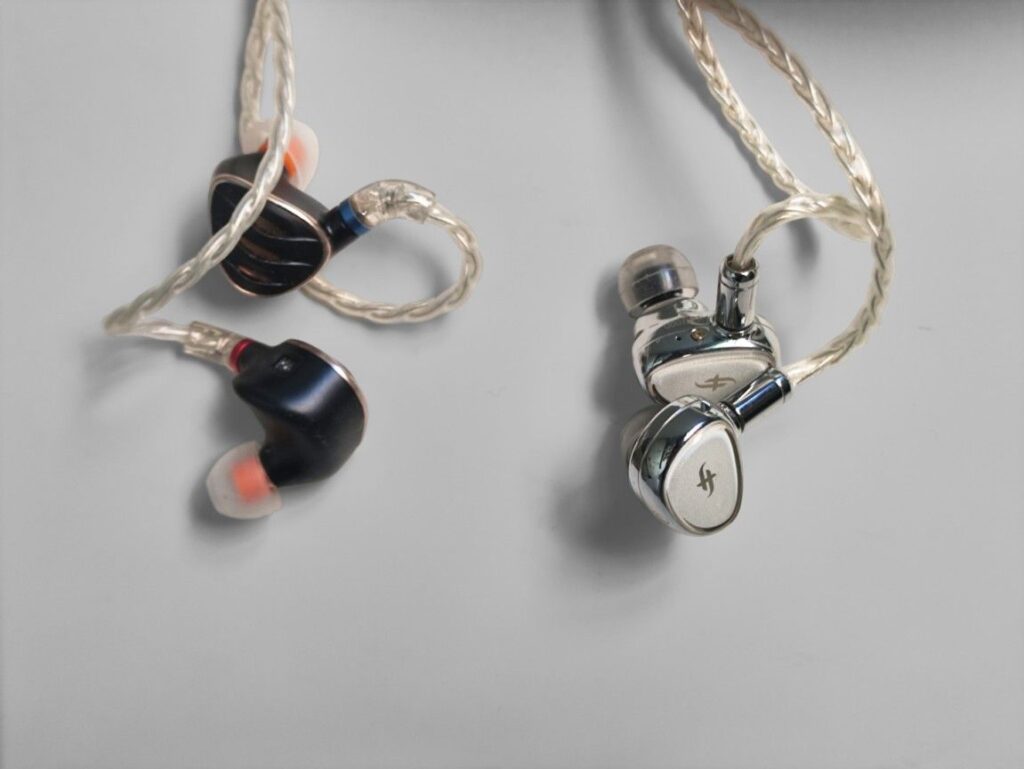
WRAPPING IT UP
Sound Signature
The EA2000 and FH5S have a relatively similar sound signature in stock settings, both being neutral-to-bright sounding. However, the EA2000 is brighter with a more energetic treble, while the FH5S sounds slightly warmer and lusher. The FH5S offers three dip switches, which certainly impact the sound signature. I will elaborate on that in my dedicated review. In this comparison, I have mostly stuck with the stock tuning, but I really like the bass boost switch on the FH5S; it not only increases the bass, but it makes the sound warmer and often more dynamic as well.
Treble
The EA2000’s treble is very present and extremely detailed. Mostly, it is pleasant but there can be occasional sibilance. The FH5S has a good treble, but it’s not as clear and crisp as the EA 2000 and comes off as a bit dry sounding in direct comparison.
Midrange
The midrange of the EA2000 is very clear. It has more texture and detail than smoothness and warmth. The EA2000 isn’t an especially mid-centric IEM, but I do not find the midrange to be recessed.
The FH5S generally has a bit more mid-range presence, but it is of a smoother nature. Details are often less pronounced, and it feels less intense, which can often be beneficial. However, the differences vary from track to track. When the bass boost is activated, the midrange of the FH5S generally gets more pronounced and stands out more in the mix. It becomes warmer-sounding, losing the dry feeling it can have in the stock configuration.
Bass
The bass has a very high quality with lots of definition and tactility with both IEMs. The FH5S often, but not always, comes off as slightly more bassy, even with the bass switch turned off. The EA2000 has relatively more upper mids and treble energy, which makes me adjust the volume down a tad. Mostly it has enough bass for me, but sometimes I would prefer some more. The EA2000 might have a more organic-sounding bass, but they are really close.
Soundstage and Imaging
The EA2000’s sound stage is very large for an IEM, with a good sense of air and great imaging. The soundstage of the FH5S is also good. It’s worse and tall, but lacks a bit of depth. The EA2000 has better separation of instruments and layering.
Dynamics, Detail, and Timbre
I find both to have good dynamics, but the EA2000 is a step or two up. It’s an extraordinary dynamic-sounding IEM all across the frequency spectrum, with excellent macrodynamics as well as microdynamics.
However, large dynamic contrast isn’t always a pro; there certainly are tracks where the smoother presentation of the FH5S is more enjoyable, and it is not like it cannot throw a punch when called for.
Both are very detailed sounding iems, but again, the EA2000 is more articulate. It’s also generally more organic sounding.
When it comes to timbre, it gets a bit difficult. The bass on the EA2000 has a rather warm, slightly meaty timbre, while the FH5S is more textured and crisp. The midrange is neutral and less full-sounding than the bass with both. With the bass switch enabled, however, the FH5S generally comes off as warmer and fuller in the mids.
The treble’s timbre is more organic sounding with the EA2000. It’s more liquid, but still quite crisp and definitely not laid back. The FH5S has a very detailed sounding treble, but it lacks a bit of that liquid magic I hear with the EA2000.
Overall, I find the EA2000 to sound the most natural, but I would like some more midrange warmth. The blue tuning plug addresses that, but at the cost of dynamics and separation. The FH5S’ bass switch makes no such compromises – even the dynamics often gets better.
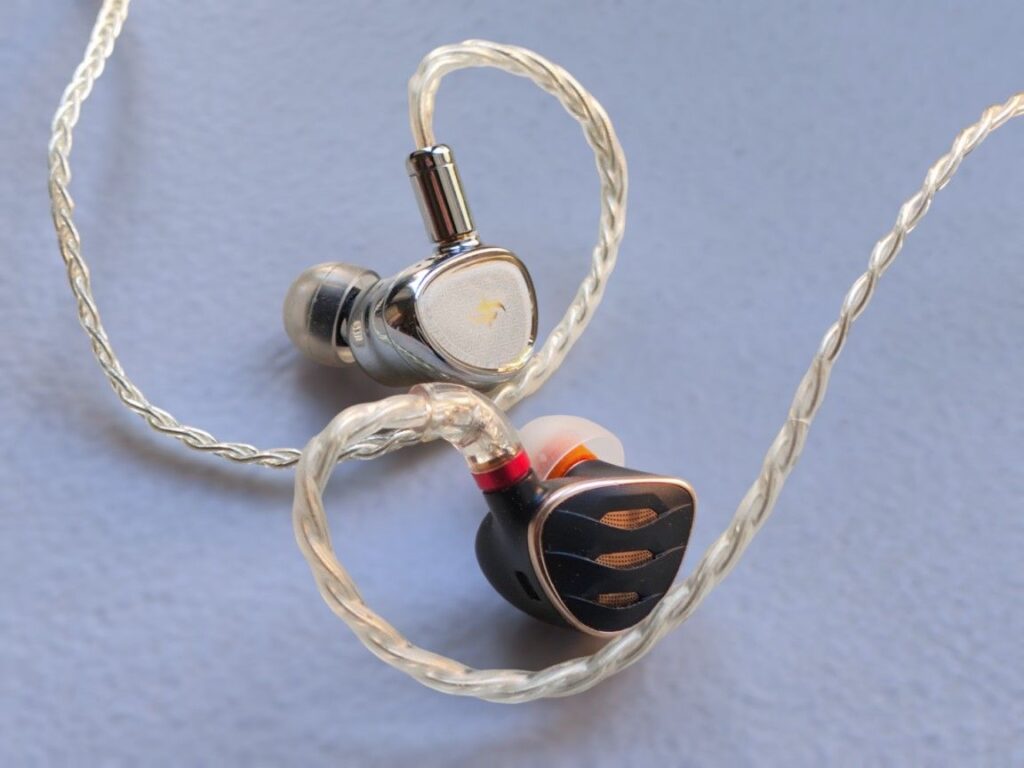
CONCLUSION
Some comparisons are more difficult to write than others. For me this was a challenge because I like both earphones very much, but for different reasons.
In their stock tunings, the EA2000 and FH5S share a neutral-to-bright sound signature, yet with distinct differences.
The EA2000 exhibits a very energetic and organic sound. It has a crisp, yet liquid treble, a clear, but not very full sounding midrange, and a well-defined, yet very organic sounding bass.
The FH5S sounds less energetic and gives off a smoother vibe. The bass is very controlled and similar to that of the EA2000. The midrange has a bit more presence, but can tend to come off as a bit dry in the stock setting. This also goes for the treble, which not as liquid as that of the EA2000.
However, the FH5S’s bass boost switch really makes a positive impact; it enhances midrange warmth and removes the aforementioned dryness. What’s even better, it tends to increase dynamics. Still, however, the EA2000 is more punchy and has better dynamic range – along with more precise imaging.
To conclude, I must admit the EA2000 has something extra to me. It’s more magical. That being said, there’s plenty of music where I find my hand reaching for the FH5S instead, especially when the bass switch is activated.
Support us by getting EA2000 here:
- Linsoul: Simgot EA2000
- Amazon: Simgot EA2000
Support us by getting the FH5S here:
Any purchase you make on Amazon or Linsoul with any of our affiliate links will give us a small provision at no cost to you.
We only get a provision for items that are not returned, so there’s no incentive for us to recommend something that’s not good.
Linsoul : Headphones, Earbuds, Wireless Earbuds, Desktop DAC/AMP, Portable DAC/AMP, Digital Audio Players,
Amazon: Headphones, IEMs, Headphone Amplifiers, Home Audio or Anything else.
.
If you enjoyed this article or other content on The Headphoneer, you might consider leaving a small donation to keep this website up and running. No donation is too small. Thanks for supporting us!
If you like our work please follow us on Instagram, Facebook and Twitter , it will help us grow. Sharing is caring 🙂


